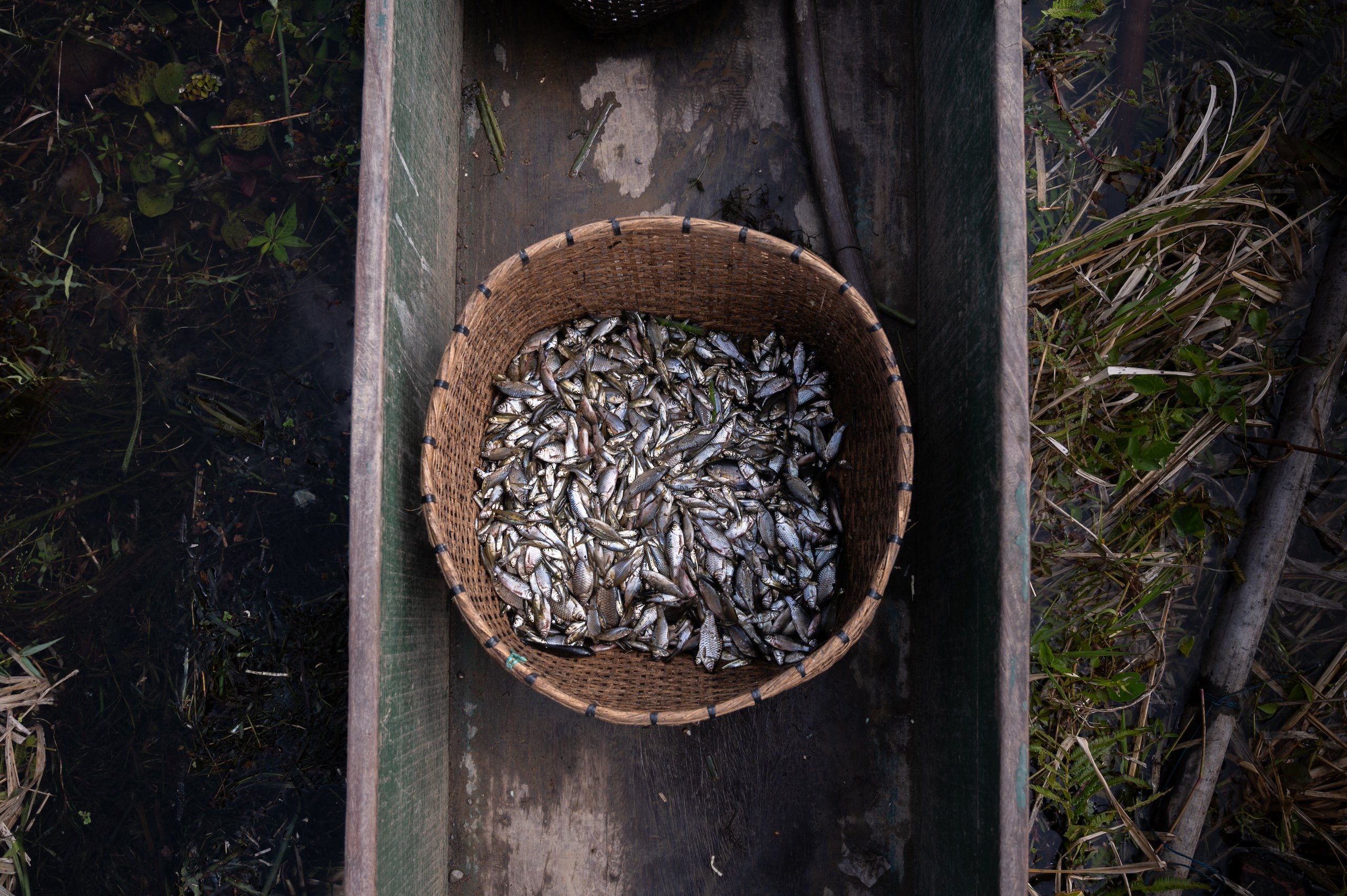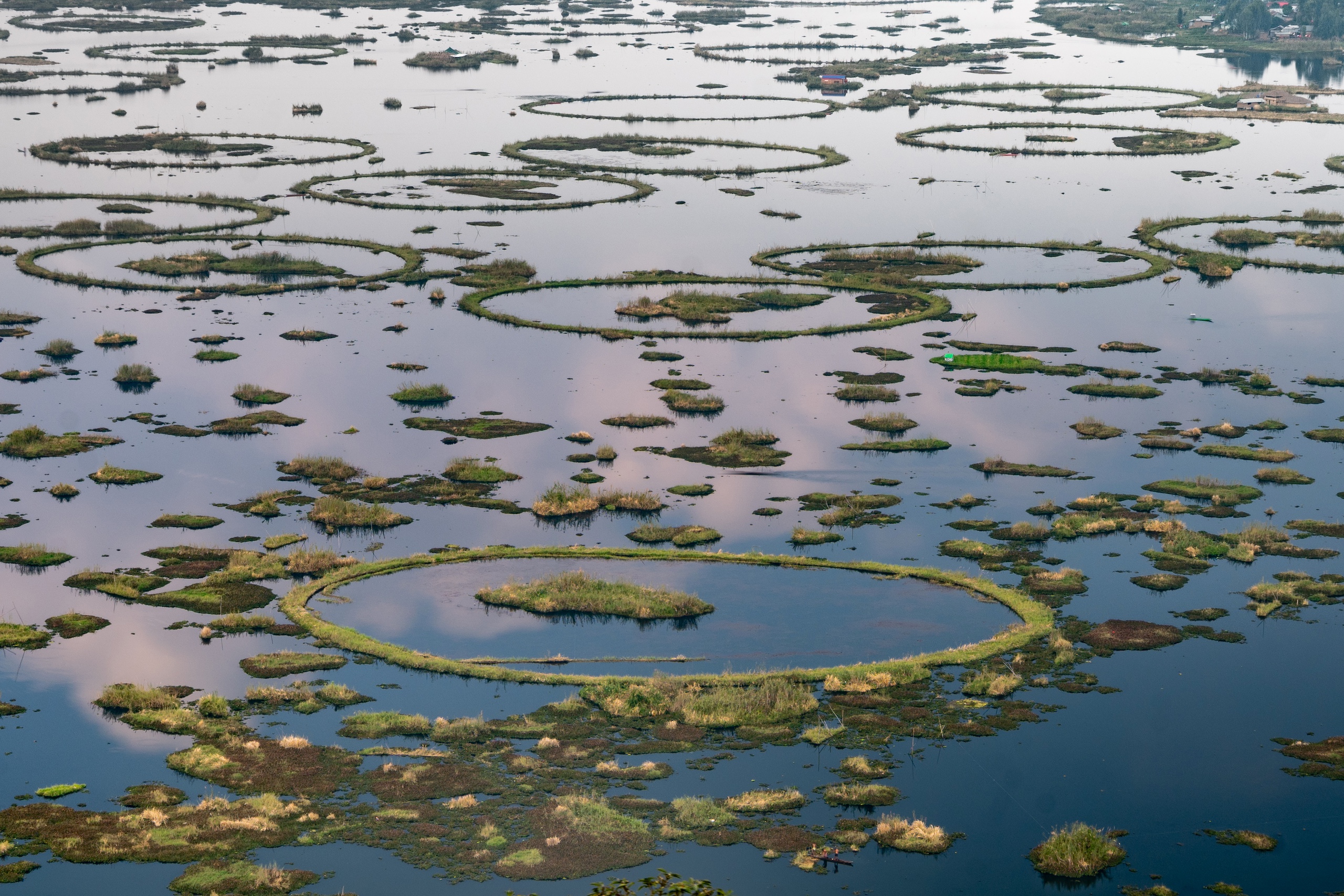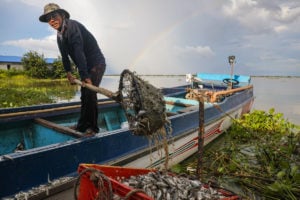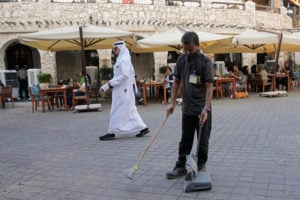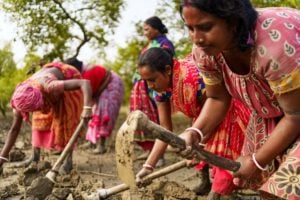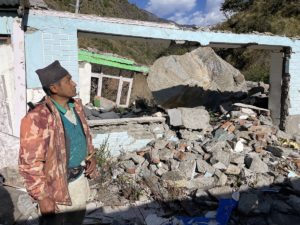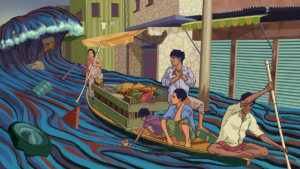Loktak Lake, in the northeastern state of Manipur, spanning 287 sq km, is one of the largest freshwater lakes in India. Over 100,000 people live in villages along its shores, relying on its fish for their livelihoods.
Embedded deeply in Manipuri culture and folklore, the lake has served as a vital lifeline to many as conflict between the Meitei and Kuki-Zo ethnic groups has consumed the state since May 2023.
Laishram Shanta, 50, from the village of Thinungei on the lake’s shore, used to earn a living as a woodcutter, travelling to remote hill villages for work. However, the ethnic violence in Manipur has made such travel perilous. In the past 14 months, more than 226 people have been killed and at least 67,000 displaced, dividing the state between Meitei areas and Kuki-Zo areas.
“Earlier, most of our villagers used to work at the Churachandpur district [about 50 km away] but because of the war, we are left with no choice but to seek refuge from Loktak Ema,” Shanta said, referring to the lake as a goddess, a provider for the community.
The lake is integral to Manipur’s economy, with a 2017 study estimating that 12% of the state’s population depends on it for their livelihood. However, for those newly turning to fishing – referred to as ‘new fishers’ – there are multiple challenges. “We need equipment such as nets, canoes and traps and one also needs to have the basic skills of fishing and rowing canoes,” Shanta said.
To mitigate costs, these ‘new fishers’ wait for established fishers to return to shore to rest and borrow their canoes and equipment, such as the long, a locally made fishing spear.
Additional pressure on a strained lake
The influx of new people on the lake has been substantial. While there are no official figures, Shanta estimates that in Thinungei, about 100-150 people used to fish for their livelihoods before the conflict. Now, that number has tripled, putting significant strain on the ecosystem.
“Loktak Ema used to rest,” said Khoirom Kiranbala, a resident of Champu Khangpok, a village that floats on phumdis (a heterogenous floating biomass or ‘islands’) inside the lake. Since the conflict, however, “Loktak has seen no rest, as many people fish in the day and night.” She added: “Since the new fishers are also our brothers and relatives and in grave need, we cannot oust them from the lake despite our own earnings falling significantly due to more competition.”
Unusual weather patterns have exacerbated the problem, with high-intensity hailstorms and floods in May 2024. As an after-effect of the flood, “Loktak has been filled with silt, sewage, plastic, debris and all sort of pollutants. Hence, fishing has been at a standstill due to the pollution and foul-smelling water. Many fish have also died,” Kiranbala said.
A long history of neglect
This is only the latest of a long series of issues that have plagued Loktak Lake. It is one of two Indian lakes listed under the Montreux Record, a registry of important wetland systems that are facing environmental degradation. The problems date back to 1983, when the Ithai Barrage was constructed as part of the Loktak hydroelectric project. The barrage blocked the migration of fish coming upstream to breed from the Irrawaddy River, leading to the extinction of local fish varieties. In response, common carps and other non-native fish were introduced into the lake to bolster fish stocks and support the fishers dependent on their catches for their livelihood.
“However, despite spawn being released every year by the fisheries department, the catch has been on a decline, causing severe stress among the fishers,” said Oinam Rajen, secretary of the All Loktak Lake Areas Fishermen’s Union, Manipur. The economic uncertainty due to the declining catch discouraged fishers, and, “many had migrated elsewhere for work” Rajen added.
In 2017, the chief minister of Manipur suggested decommissioning the hydropower project, marking the first time that a party in power had proposed such action. Despite this, when the project’s official productivity ended in 2018, its life was extended for another five years until 2023. Now the NHPC, which runs the plant, is seeking to extend its life by another 25 years, leading to criticism from local communities and even by the Loktak Development Authority (LDA) – the main executive body in charge of the lake.
Ignoring laws and the impact of climate change
The Ithai Barrage is not the only issue plaguing Loktak Lake, but it is indicative of how long it takes for local concerns to be taken seriously by policymakers. Another example involves an ongoing legal case dating back to August 2017, when the Manipur High Court took responsibility for monitoring the state’s wetlands, with a particular focus on Loktak Lake, a Ramsar wetland site of international importance.
There have been nearly 80 hearings since then; some of the court orders make for grim reading. For example, one detailed order in 2020 bluntly stated that it seemed the Manipur State Wetlands Authority was unaware of a project being undertaken by the LDA. In a February 2022 order, the court reiterated that, as per its earlier ruling in 2020, the LDA should not undertake any development projects until proper plans had been formalised. The Environmental Support Group, a civil society group, provided a scathing commentary on how the main institutions of Manipur had repeatedly tried to pursue projects at the cost of local people, ignoring environmental legislation.
All of this is happening as climate change poses additional challenges. A recent paper on hydrology highlights that the larger northeastern Indian region will face wetter and warmer weather in the coming years, with streamflows into Loktak Lake spiking significantly during the monsoons. This will increase the risk of flooding.
Until now, Loktak has offered refuge during times of crisis. As Shanta put it: “If not for the benevolent Loktak Ema, I would not have known what to do for a living during these hard times.” But the lake is under increasing pressure from a combination of official neglect and climate change. For how much longer it can continue to provide safe harbour is unclear.
Additional input by Omair Ahmad

